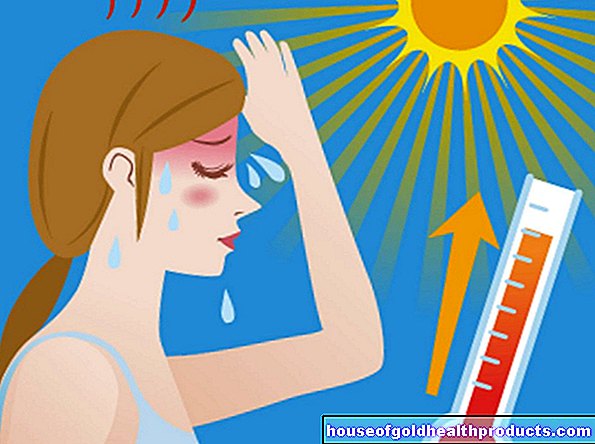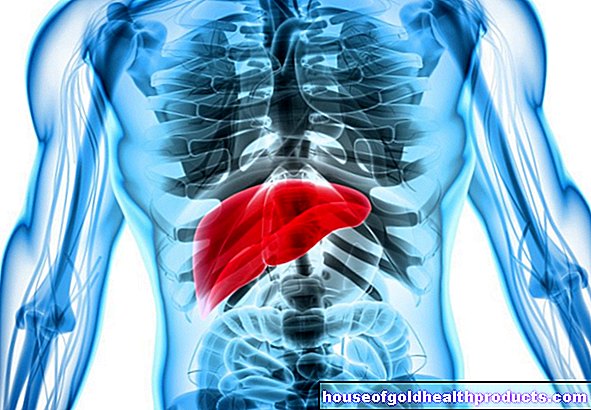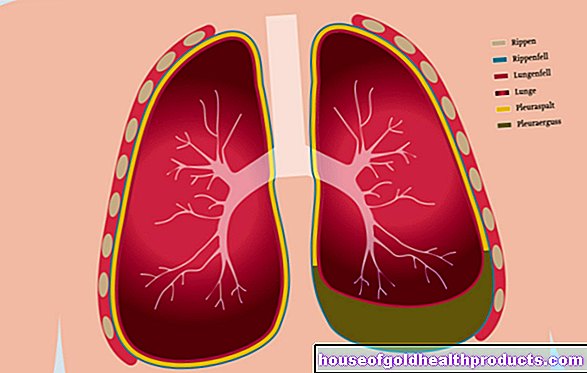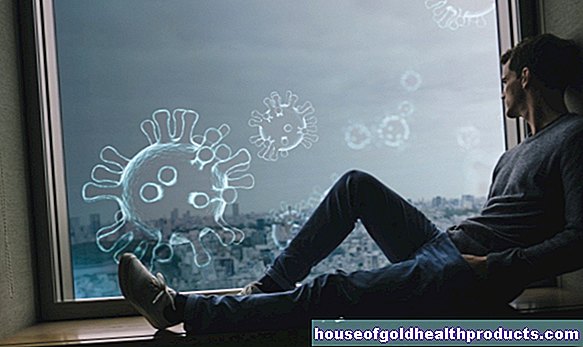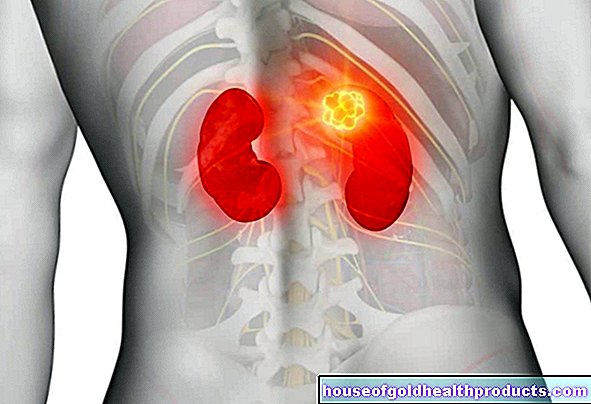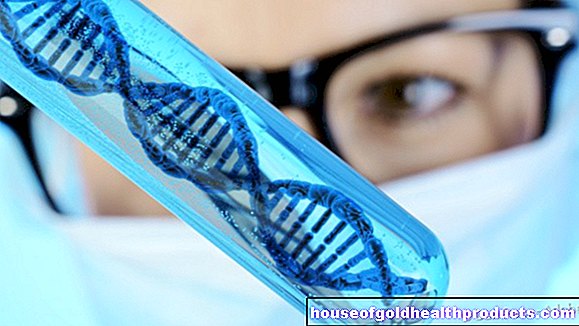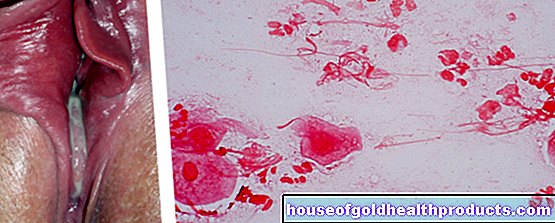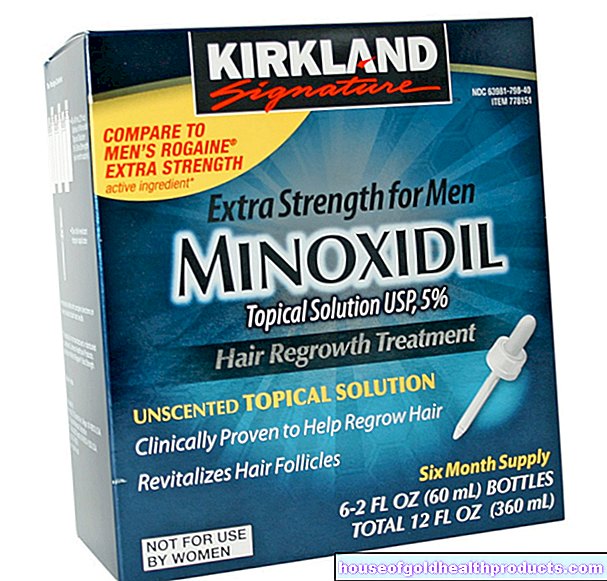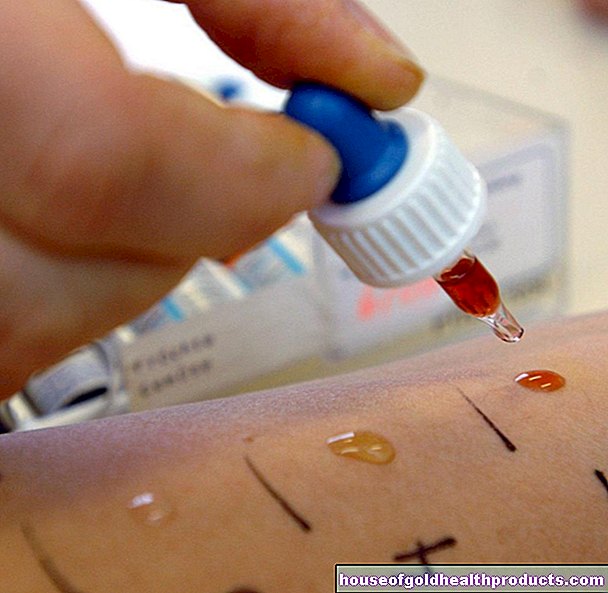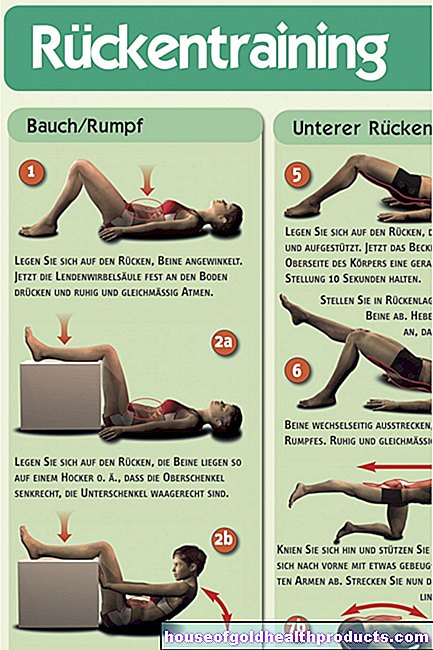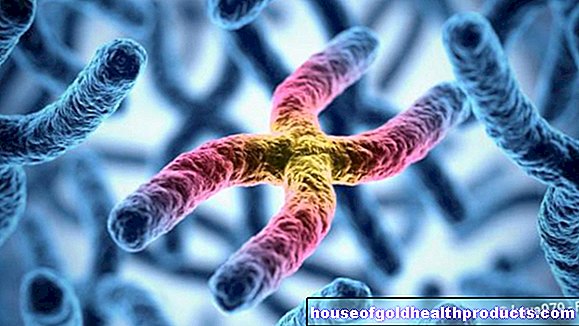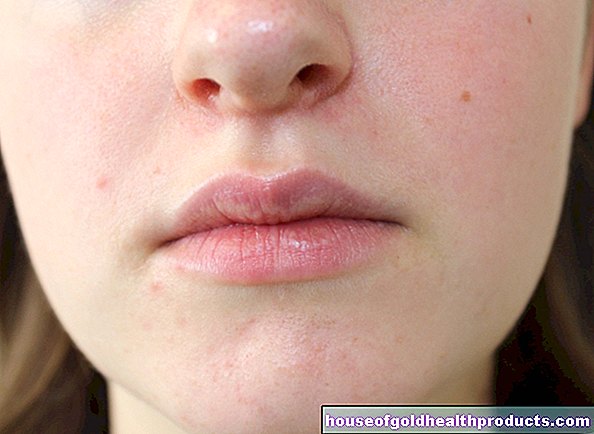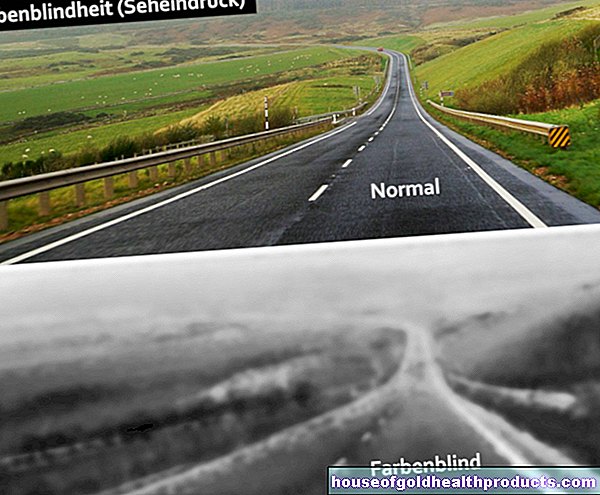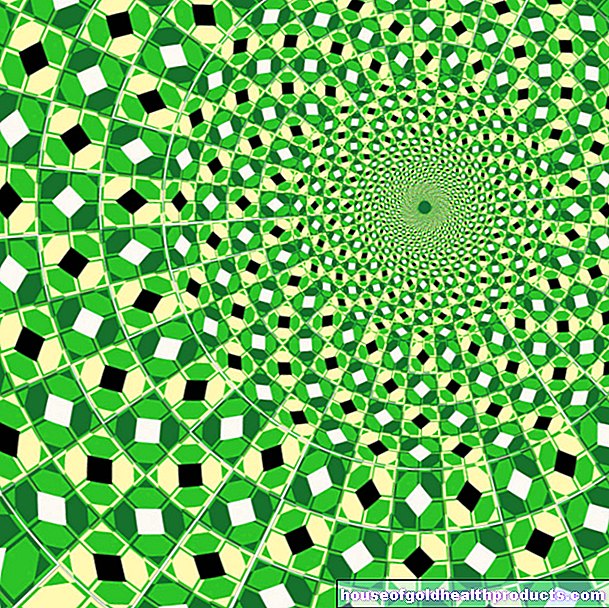Cysts
All content is checked by medical journalists.A cyst (from the Greek "kystis" = bladder, urinary bladder) is a fluid-filled, encapsulated cavity in the tissue. It can consist of one or more chambers, be large or tiny. Most cysts are benign. Read here why cysts form, what symptoms they can trigger and how they are treated!
ICD codes for this disease: ICD codes are internationally recognized codes for medical diagnoses. They can be found, for example, in doctor's letters or on certificates of incapacity for work. N43K76N60M71N83L72N28Q44Q61E28Cysts: causes and forms
Cysts can develop anywhere on the body and at any age. The reasons for this are diverse.
Some cysts arise when there is obstruction to drainage from a cavity that creates or contains fluid. For example, if the duct of a sebum gland in the skin is blocked, a sebum cyst (a type of blackhead) can form.
In other cases, cysts develop due to chronic diseases (e.g. lung cysts in cystic fibrosis), hereditary diseases (e.g. cyst kidneys or cyst liver), tumors or as part of developmental disorders in the embryo.
Infections with parasites (such as the dog or fox tapeworm: echinococcosis) can also cause organ cysts. In addition, cysts can form under the influence of hormones, for example on the female breast, ovaries or testicles.
More common cysts include:
- Kidney cysts
- Liver cysts
- Ovarian cysts (ovarian cysts)
- Water rupture of the testicle (hydrocele)
- Cyst in the hollow of the knee (Baker's cyst)
- Thyroid cysts
- Cysts in the glands on the eyelid
- Sebum cyst of the skin (atheroma)
- Cysts in the chest
- Bone cysts
- Tooth root cysts
One speaks of a "real cyst" when it is lined with cells. A pseudocyst, on the other hand, is surrounded by connective tissue.
Cysts: symptoms and investigations
Symptoms
The symptoms that cysts cause depend, among other things, on the type of cyst, its location and its size. Some cysts are known as swelling that can be seen or felt, for example a cyst in the chest. A Baker's cyst in the hollow of the knee can also be palpable from a certain size. It can also cause a vague feeling of pressure, pain and even numbness in the lower leg.
Other cysts go unnoticed for a long time because they are located on internal organs (such as the kidney, liver).
Whether or not a cyst causes symptoms does not tell you whether it is benign or malignant (most cysts are benign!).
Investigations
Cysts in internal organs that do not cause symptoms are often only discovered by chance - for example during an ultrasound examination that is done routinely or because of another disease.
Sometimes more tests are needed to pinpoint the size and cause of the cyst. These include, for example:
- Computed tomography (CT)
- Magnetic resonance imaging (MRI)
- X-rays
- Blood tests
- Cyst puncture (the doctor takes some liquid from inside the cyst with a fine hollow needle in order to have it examined more closely in the laboratory)
Kidney cysts
Kidney cysts can occur singly or in groups on one or both kidneys. As a rule, they do not cause any symptoms and are therefore usually only discovered by chance. However, large cysts can manifest as pain in the back or abdomen.
Cysts in the kidney may become infected, burst, or bleed into the cyst. Renal cysts rarely change in a malignant manner. Occasionally they occur in combination with a tumor of the blood vessels (hemangioblastoma) of the cerebellum or the retina. This disease is inherited and is called Hippel-Lindau syndrome.
Kidney cysts are rare in people under the age of 30. They are more common with age. More than 20 percent of people over 60 have one or more cysts on their kidneys.
A cyst on the kidney that does not cause problems does not necessarily require treatment. Large cysts, which are associated with pain or complications, can be pierced by the doctor with a needle in order to suck in the liquid (puncture). He can have the fluid in the cyst examined under a microscope. He may be able to sclerose or remove the cyst in an operation.
Cystic kidneys
Simple kidney cysts should not be confused with cyst kidneys. Polycystic Kidney Disease (ADPKD) is one of the most common hereditary diseases. It occurs in around 1 in 1,000 people. Because of changes in the genetic material (PKD1 or PKD2 gene), those affected develop more and more cysts in the kidneys over the course of their lives - until the organs no longer function. Most patients between the ages of 50 and 60 suffer from kidney failure (renal insufficiency).
However, the disease does not only affect the kidneys. Cysts can also form in other organs (for example pancreas, liver, lungs, spleen, ovaries, uterus, testicles or thyroid). In some sufferers, bulges also form in the wall of the main artery (aortic aneurysm) or the intestinal wall (diverticulosis).
Polycystic kidney disease can lead to various complications and is currently not curable. Treatment is only required if symptoms such as urinary obstruction or urinary tract infections occur.
There is currently no drug that can be used to treat the cause of the kidney cyst. Therapy aims to relieve symptoms.
Liver cysts
One or more cysts in the liver usually do not cause symptoms. They are usually discovered by chance during an ultrasound examination. Large cysts over ten centimeters in diameter, on the other hand, can cause a feeling of pressure in the upper abdomen, nausea or jaundice.
Treatment for liver cysts is usually not necessary unless the cyst is causing symptoms. Then the doctor can pierce it through the skin with a fine needle, aspirate its contents, and inject an alcohol solution, which is supposed to obliterate the cyst. The affected person rarely has to have the cyst removed in an operation (cyst resection).
Liver cysts in echinococcosis
Not all liver cysts are harmless. Dog or fox tapeworm infection can also cause cysts in the liver. Echinococcosis is a serious disease that is fatal without treatment!
Cyst liver
The cyst liver is a hereditary disease. It is caused by changes in the genetic make-up (mutations), more precisely in the genes PKD-1 and PKD-2. The liver of those affected is covered with cysts from birth. But it can still do its job for a long time.
The cysts in the liver can be easily seen using ultrasound. Depending on their size, they cause a feeling of pressure and pain in the upper abdomen. If the cysts get bigger and bigger, they can put pressure on the stomach and intestines. Patients no longer have an appetite, may vomit more often, and lose weight.
The symptoms can be relieved in the short term if the doctor pierces the cysts and sucks off the fluid. After a while, however, fluid usually flows in - the cysts fill up again. There is also the option of surgically removing part of the liver (partial liver resection). In some cases, only a liver transplant will help.
There are no drugs that heal the cause of a cyst liver.
Ovarian cysts (ovarian cysts)
Cysts on the ovary can be congenital - they form as a result of abnormal development during the embryonic period. This happens, for example, with the so-called dermoid cysts. They can contain other types of tissue, such as hair or teeth.
Most of the time, however, ovarian cysts are acquired and arise due to normal hormone fluctuations during the female cycle. Some ovarian cysts also form from taking hormonal drugs.
Ovarian cysts often do not cause any discomfort. Sometimes, however, dull pelvic pain or menstrual cycle disorders (e.g. missed or heavy periods) can occur. For example, acute abdominal pain is possible when a cyst bursts. An ovarian cyst that is stalked and twists on its own axis can even cause severe abdominal pain. In addition, ovarian cysts, if they are very large, can put pressure on the bladder or intestines. If the cysts are estrogen-producing cysts, spotting may occur.
Treatment depends on the symptoms and the size of the cyst or cysts. In many cases one can wait and see.Some women are helped by drugs that suppress ovulation (for example, the pill). If the cysts do not regress, the doctor can surgically remove them as part of a laparoscopy (laparoscopic cyst extirpation).
Polycystic Ovarian Syndrome
Eight or more cysts in one ovary can indicate polycystic ovarian syndrome (PCO syndrome). In this disease, the ovaries produce more male sex hormones. The women gain weight, develop acne, the voice deepens, the body hair thicker.
Endometriosis
Ovarian cysts can also occur in endometriosis. In this disease, the lining of the uterus grows outside the uterus, for example in the abdomen, in the ovaries or fallopian tubes. Endometriosis cysts are typically filled with breakdown products from the blood. They are also called chocolate cysts because of their brown color.
Water rupture of the testicle (hydrocele)
A hydrocele describes a build-up of fluid in the testicular cover. It can be congenital or acquired during life.
When the water breaks, the scrotum is usually enlarged and resilient. In the ultrasound, the doctor can clearly see the hydrocele and differentiate it from other changes in the testicle (for example a tumor).
In the case of a congenital hydrocele that does not cause any symptoms, one can wait until the boy's first year of life - sometimes the hydrocele regresses spontaneously during this time. The doctor will operate on older children with a congenital water rupture because otherwise they could develop an inguinal hernia later.
In the case of acquired hydroceles, the doctor first treats the underlying disease (e.g. inflammation of the testicles and epididymis) and then removes the hydrocele in an operation.
Cyst in the hollow of the knee (Baker's cyst)
A Baker's cyst is a cyst that originates from the posterior joint capsule in the knee joint. It occurs in diseases of the knee in which chronic joint effusion occurs (e.g. rheumatic diseases). Then the posterior joint capsule can protrude and form a cyst.
A resilient swelling can be felt in the back of the knee. It can also hurt when the knee is bent. In rheumatic diseases, the cyst can become so large that it continues into the lower leg. Such large cysts can compress blood vessels and cause circulatory disorders. This manifests itself in numbness in the lower leg or foot and maybe even symptoms of paralysis.
Small cysts, on the other hand, hardly cause any discomfort and can remain untreated. A Baker's cyst often regresses spontaneously if the doctor successfully treats the underlying disease. Large cysts that cause discomfort can be surgically removed.
Tags: sleep Menstruation diet